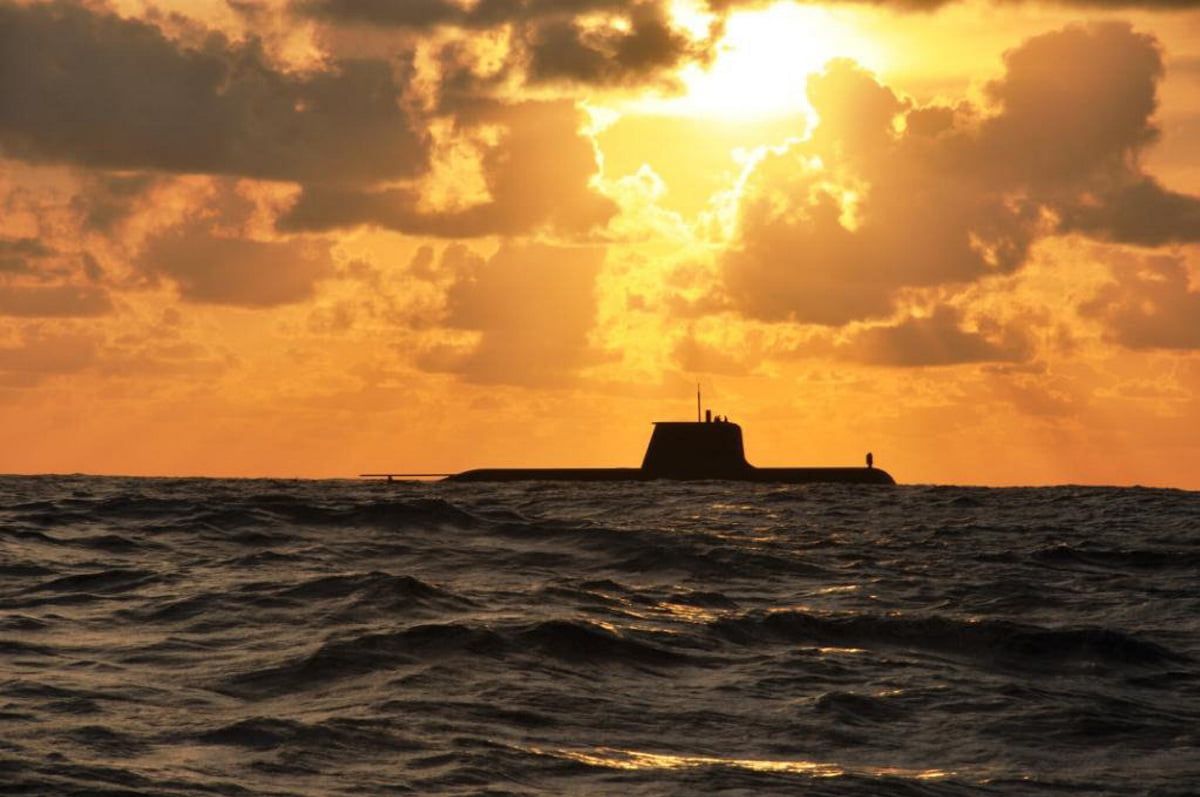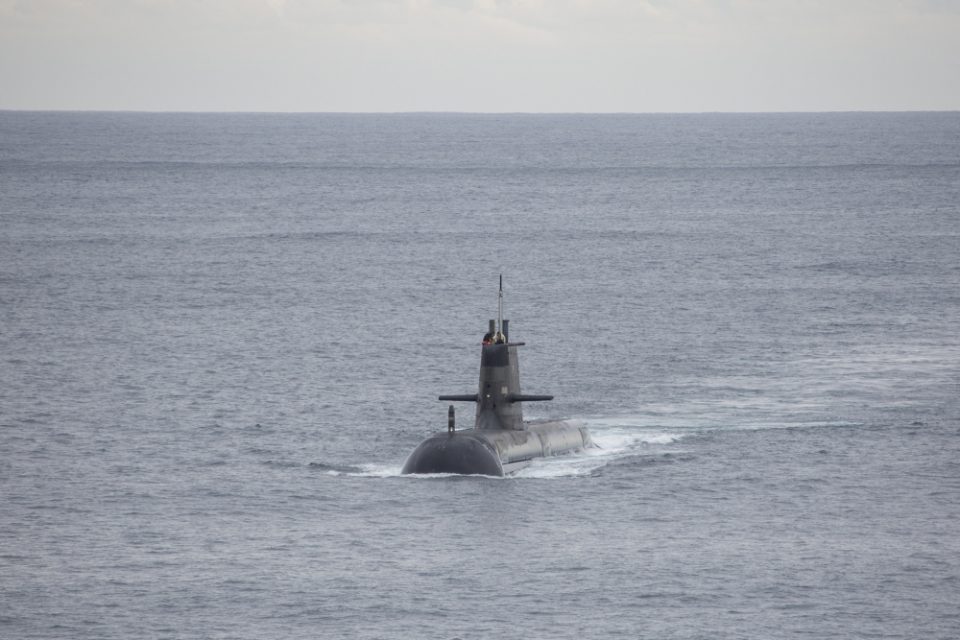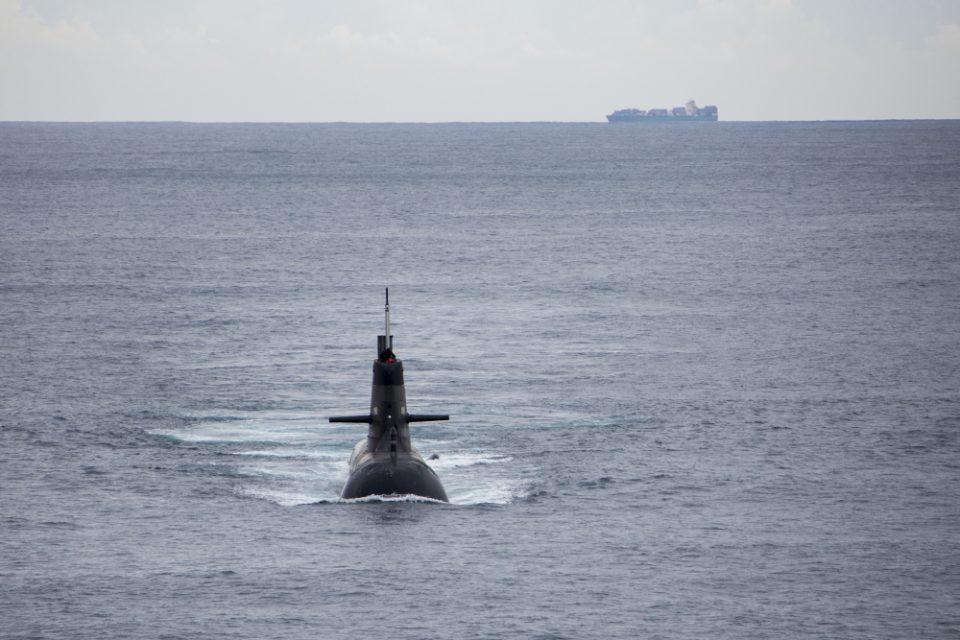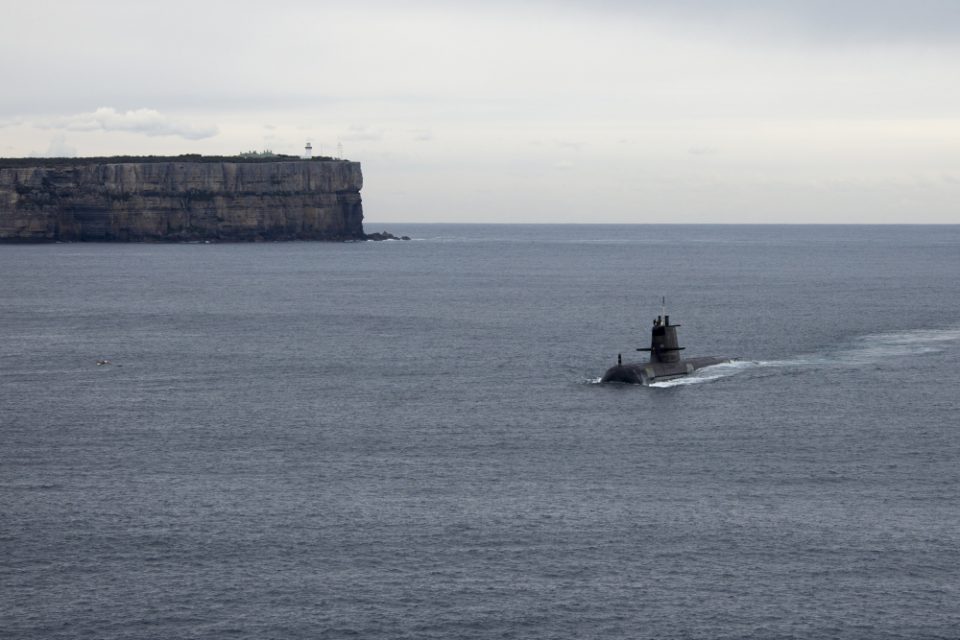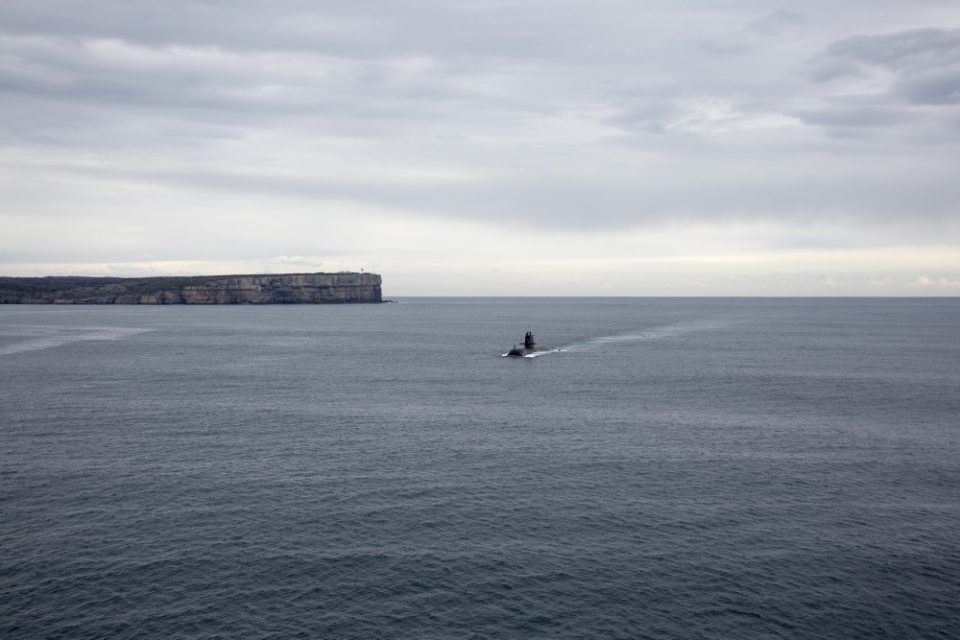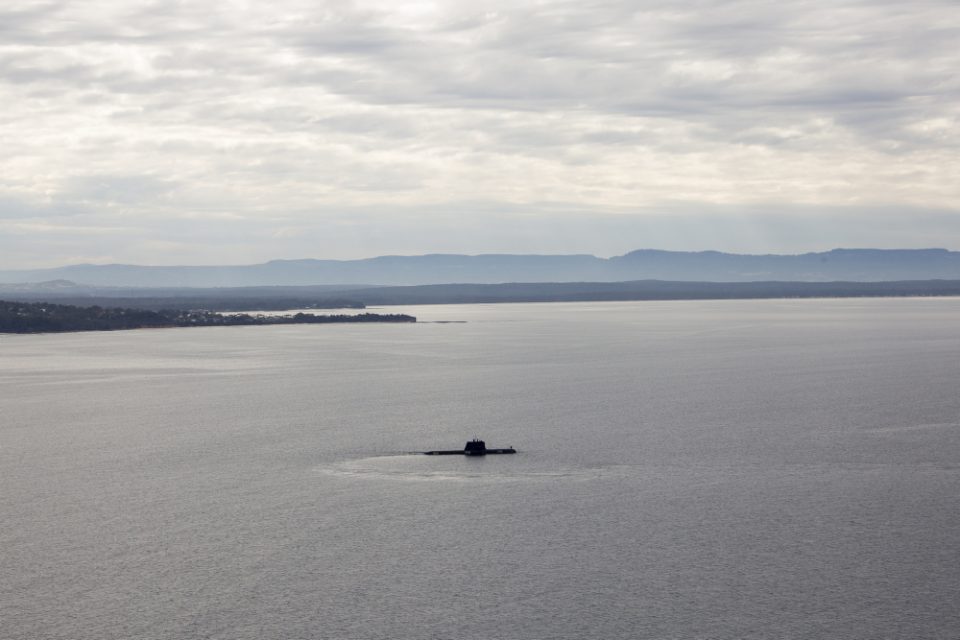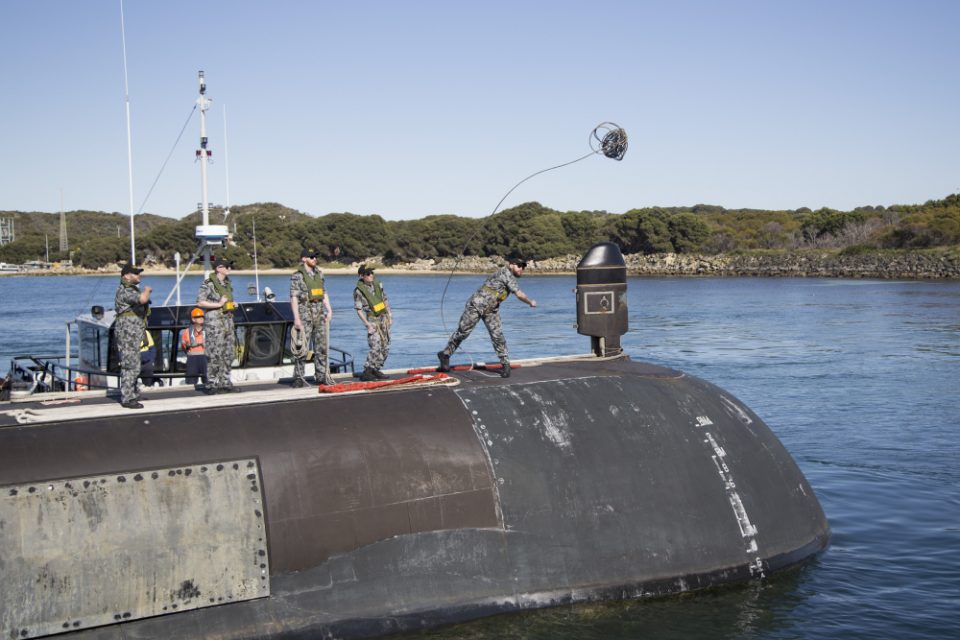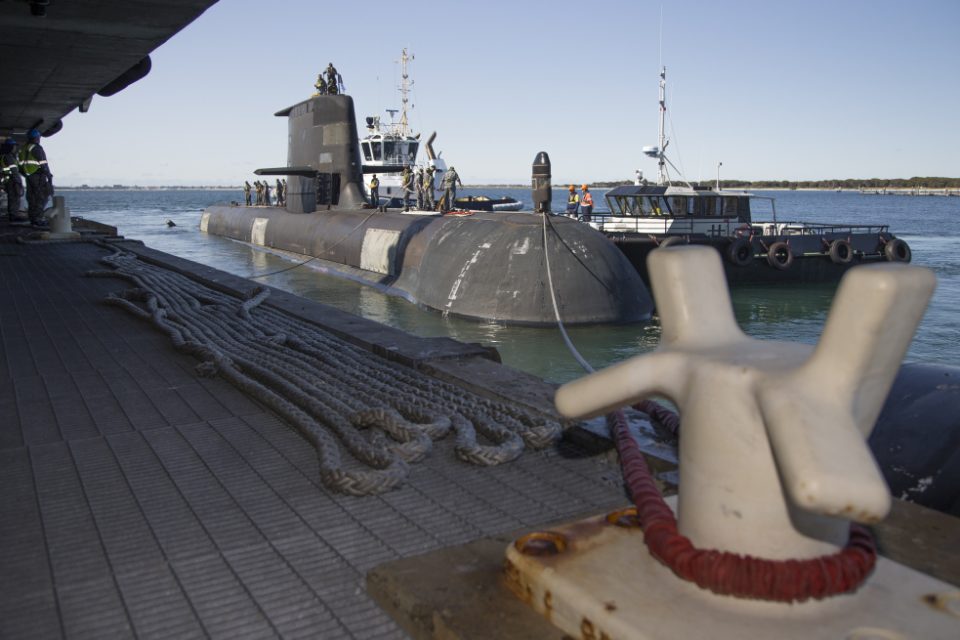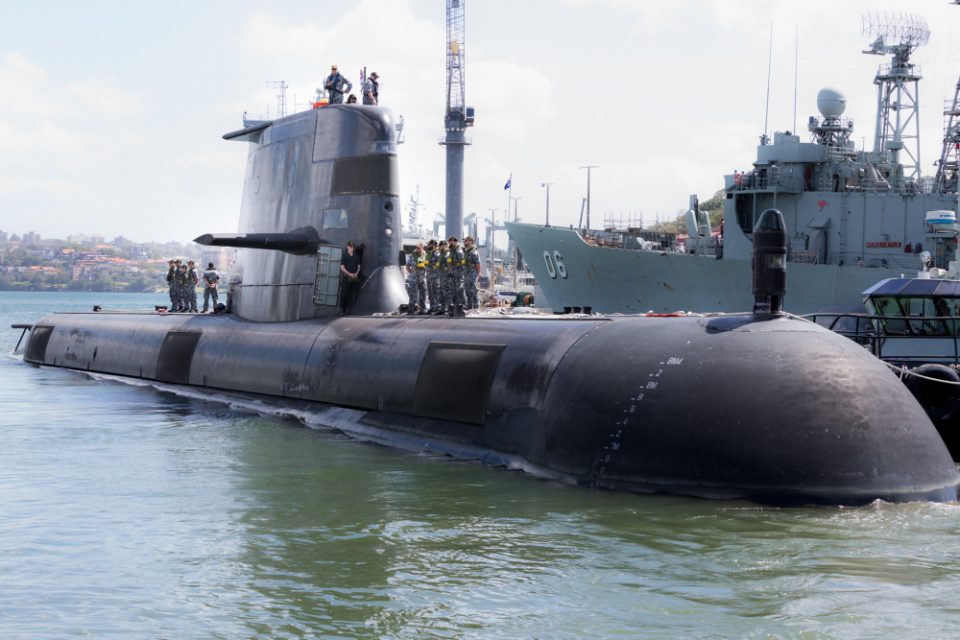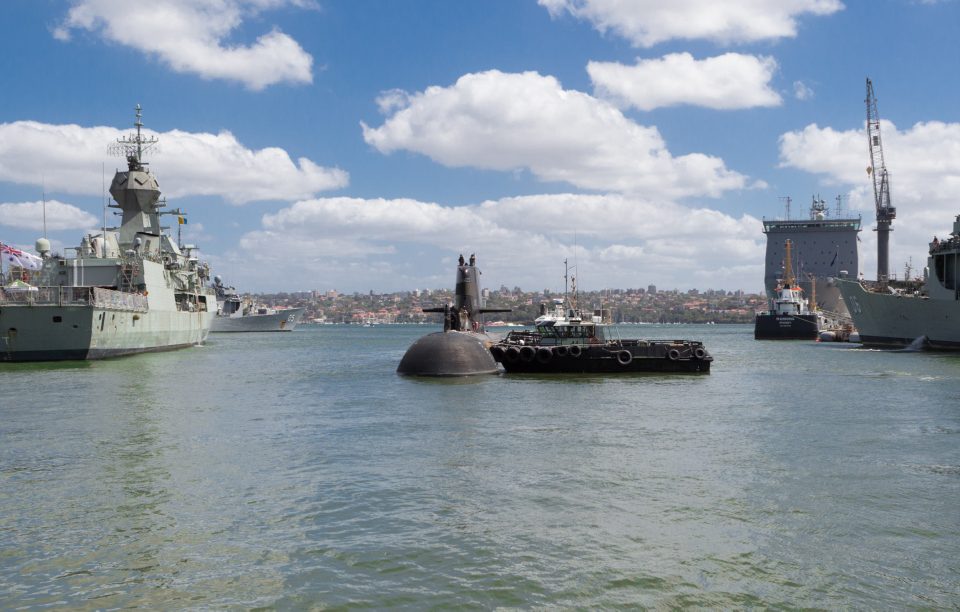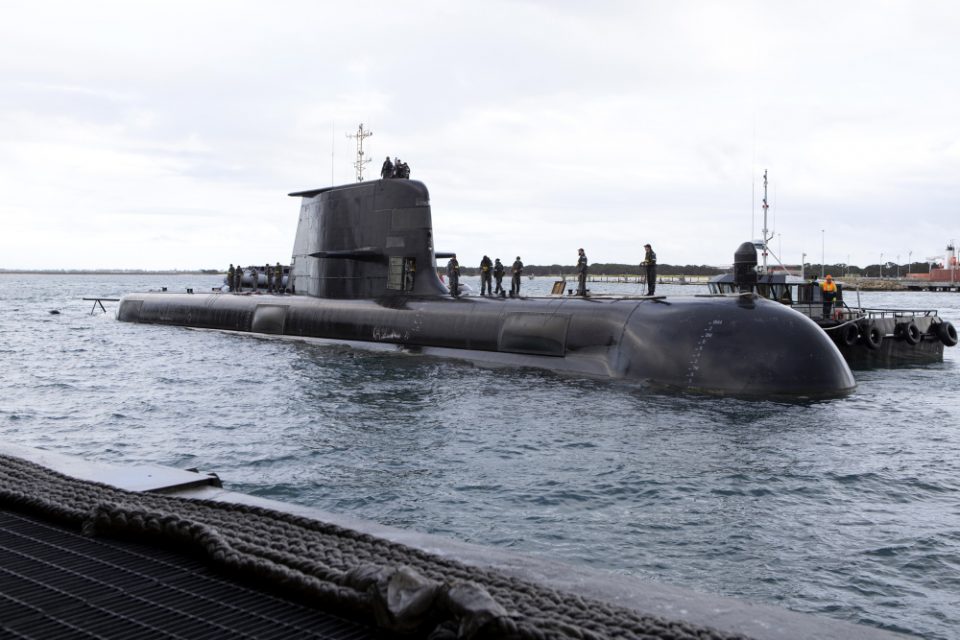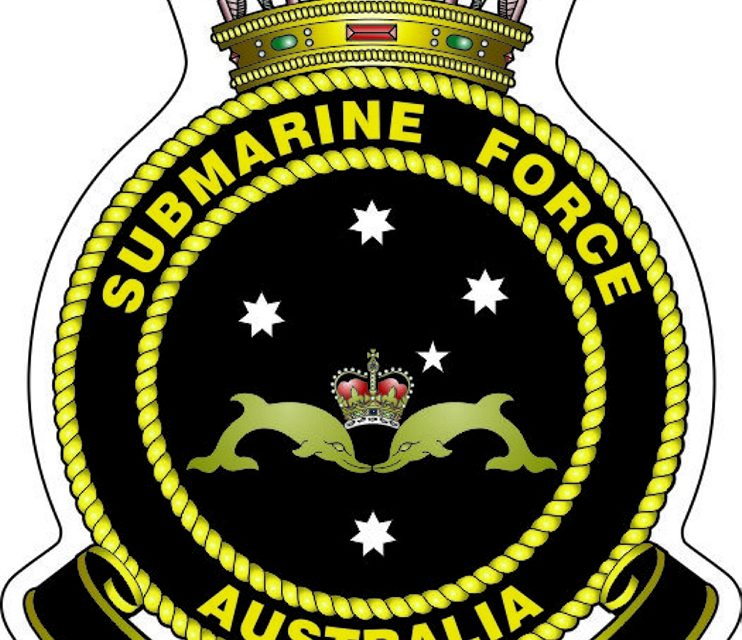By Robbin Laird
It would be hard to find a key combat asset for the Australian Defence Force, which has received more criticism over the years than the Collins class submarine.
Yet while the past is behind us, the narrative has clearly changed.
The Royal Australian Navy working with its industry partners has clearly shaped a new narrative, one in which more ships are available on a reduced time scale to provide for the maintenance of this key asset.
And learning how to do so is a crucial part of the learning curve PRIOR to building a new submarine, one that will be bought at twice the numbers and be a larger ship as well.
Clearly, the Royal Australian Navy is looking to build a more maintainable submarine this time around and is building from lessons learned on the Collins class.
In my past discussions with recently retired Vice Admiral Tim Barrett when he was Chief of Navy, he highlighted the importance of getting the Collins class availability on the right footing.
During a 2016 interview, Vice Admiral Barrett put it this way:
Question: Clearly, building a sustainable navy from the outset is crucial to your design effort.
How do you view the challenge of building a more sustainable navy from the outset?
Vice Admiral Barrett: “It is crucial to deterrence. If your ships are not operating at sea they will have little effect.
“For example we have changed our approach to the Collins submarine largely around sustainment and working more openly with industry to achieve much greater at-sea operational tempos.
“We have put in place an enterprise approach, which focuses on availability of submarines; Industry and Navy are working closely together now to achieve that core objective.
“I’ve got industry keenly interested in the results of what the submarines do when they leave port and go on operations. And we’ve had a dramatic turnaround in submarine availability as partnering has improved.
“For me, deterrence, lethality, availability, sustainability, and affordability are highly interrelated for a Navy and its combat performance.
“And clearly as we design new ships, designing in more sustainable systems and ships is crucial.”
And he added the following during one of our 2017 interviews:
For example, we have a small submarine fleet of six submarines; they are not going to deter anybody if they are not available and capable of going to sea.
As we discussed last time, we have put a major effort in getting much greater availability from our Collins class submarines, and the ways we have done so will shape our approach, our expectations and our template for the operation of the new class of submarines.
We have seen a dramatic improvement in our Collins class boats.
Question: In other words, by learning how to ramp up availability with today’s fleet you are preparing the template for future operations?
Vice Admiral Tim Barrett: That is clearly our approach going forward.
We should be building our sense of availability in the design right now, so that when the future submariness arrive in place, we have maximized availability, and through that deterrence given their contribution to a distributed lethal force capability.
And this clearly is a key challenge for the workforce to shape enhanced availability.
During my current visit to Australia, I had the opportunity to visit the Osborne shipyards in Adelaide, South Australia, and get a look first hand at the changes in the Collins sustainment approach.
During that visit I had a chance to meet with Brad Hajek, Director Upgrades, Collins Submarine Program, who provided a comprehensive and thoughtful overview of the achievements of the new sustainability approach.
In addition, I was given a really first rate tour by Kerry Fisher, the Naval Representative for South Australia, of the current Collins class submarine undergoing deep maintenance, namely HMAS Waller.
This process used to take three years for what they refer to as Full Cycle Docking (FCD), but have reduced to closer to two years. The FCD cycle is a 10-year one, so getting the savings of one year is clearly a major improvement.
And at dockside, HMAS Collins was preparing to leave after its FCD to go back to sea.
With the very significant upgrades Collins received, it was going to sea as a much more capable ship, notably with regard to its communications and warfare suites.
In 2016, the Collins review report was published and has been referred to as the Coles Report after its main author. In that report, the key challenge identified was to ramp up availability of the submarine itself.
The focus was upon getting Collins up to the high end of international standards with regard to availability.
According to Hajek: “The international benchmark of submarine availability was set as a target and goal for the Enterprise to achieve.
“We’ve achieved that, and at the heart of reaching this goal has been establishing the 10+2 Usage Upkeep Cycle and an integrated master schedule for the class.
“This reduced the planned duration of FCDs to two years.
“Prior to that, there were a number of different submarine schedules developed by each individual group, Navy, ASC, and CASG (formerly DMO). Neither were aligned and they were in constant change.
“We now have an Enterprise agreed master schedule that now has all partners focusing on the one thing – the availability target.”
The integrated master schedule provides stability to the program and provides the means to plan the necessary upgrades to modernize the submarines more effectively.
According to Brad Hajek with the current maintenance approach of two year FCDs and 12 month Mid-cycle dockings (MCD) we have the opportunity plan an aggressive upgrade program to modernize the Collins fleet.
With every major maintenance period there a large number of upgrades and updates implemented in the submarines.
Examples include a new iteration of the combat system, and a new communications suite.
In broad terms, the approach has been to find ways to reduce the time in maintenance and to find ways to improve the ability of the work force to shorten core tasks in that cycle through process and productivity improvements.
The Enterprise approach has established a governance structure and collaborative relationship between Navy, CASG, and Industry partners.
Through this approach, the direct relationship between industry involved in maintenance and the navy itself have become tightly integrated into an overall effort with the focus upon fleet availability.
According to Hajek, “the crucial aspect to the submarine program is the enterprise collaborative approach.
“The Enterprise partners all work towards a shared vision and Navy’s requirements.
“This has ensured alignment as everyone has a mutual need of driving to that metric.
“The mutual need has driven key initiatives such as improving supply chain management by removing the Commonwealth from within the value chain of the supply chain, thereby reducing a level of complexity in getting the supply chain to be more effective in terms of delivery at the right time in the maintenance process.
“We also have granted a level of engineering authority to our key Platform and Combat System Integrators by bringing them under our authorized engineering organization.
“The focus is making them more responsible and accountable at the right levels across the business.”
And having achieved much better results on availability, they can now focus on enabling the Royal Australian Navy to address a broader concern with which availability if correlated, namely how does the Australian Navy use the ship and how is use correlated with availability?
As Hajek described this aspect of the effort:
“It’s great to have the submarines available, but are they doing what the navy wants them to do?
“We are focused on deployability as a key metric. Can the submarine do the mission the navy wants it to do when the navy wants it to?
“This is obviously not something that we can do in isolation. We have to do it as an enterprise metric.”
Another aspect associated with the correlation of availability and deployability embedded in the supply aspect of maintainability is clearly learning what needs to be where and when as the fleet operates.
Hajek described this challenge as follows:
“We need to make sure we’ve got the correct critical levels of spares.
“We need to make sure we’ve got the right number and types of spares on the submarine so the crew can repair it at sea and it doesn’t necessarily have to reach back to our contractor support to fly somewhere around the world to do that repair.
“It is also about effective forward staging of materials so having materials dotted around the globe, dotted around the country where we can effect a repair in a timelier manner.”
When I visited the yard, it was clear from the tour a major step which they have taken to ramp up repairs in the FCD. They have cut the submarine in two which allows them to remove the main motor and diesel engine generators. This allows them to be worked on them out of submarine and in the workshop, which clearly is a major shift which allows workers to be much more efficient.
Rather than being forced to work within the confined space of the submarine, they can now work directly on the key parts in an open work area therefore providing great access and improved productivity.
Further supply chain improvements is the procurement of a rotatablepool of key equipment to more effectively to be able to repair key parts and then swap them from submarine to submarine, which can reduce the time for the next submarine to come in for an FCD.
In fact, one way they could further reduce FCD time would be if more resources were available to support the rotatable pool approach.
This would especially refer to motors and the long lead-time necessary to build or rebuild motors.
Kerry Fisher highlighted the importance of the rotatable pool for providing for greater fleet availability as follows:
“Having an effective rotatable pool means that we do not need to take things off the boat, and then sending it away for the refurbishment and have to wait for that refurbishment process to give us back the parts.
“We’re can take them off and replacing it right away with one from the shore. This is especially true of things like diesel engine frames.”
Another key challenge faced by the ongoing repair and maintenance cycle is the obsolescence of key parts.
Given how long the submarine is in operation, several parts are no longer built which means that the repair cycle is challenged with regard to how to replace those parts or repair them.
One approach being taken by the team is to have the prime contractors focus on the obsolescence of parts by working with their suppliers to learn about upcoming obsolescence and perhaps buy up in advance parts that will be leaving the marketplace.
This problem is real one as parts suppliers can be purchased by global suppliers, which in turn changes who is responsible for what and may well effect which supplies stay in production or not as well.
At the heart of the change is reworking the relationship between Navy and industry.
As Hajek noted: “There’s a big focus this year on embedding our CASG staff within our primes as part of our training and development strategy.
“This provides a broadening opportunity for our staff to learn the business of how they operate, this will help to improve their ability to perform second-level, third-level quality assurance governance roles.”
Another aspect of change is how procurement of parts is being pursued.
Hajek highlighted how this is being worked.
“We have transfer inventory to the suppliers and made them Stock Item Owner.
“This in turn provides clear lines of responsibility for supporting and keeping the right materials on the shelf.
“We are focused on getting the right critical level of spares on the shelf, on board the submarines, so if there’s a defect, the crew can then affect the repair, or the contracted support and affected the repair without delay.”
The Collins submarines will be in operation through the mid 2030’s.
And the current cycle is to have two deployable submarines consistently available, with four available to the fleet commander, and of these four, three submarines consistently available for tasking with one in shorter term maintenance, and two submarines in long term maintenance and upgrade.
A new submarine is coming to the fleet in the 2030s, but given the experience with the Collins class, the Royal Australian Navy will play close attention to the question of built-in modernization and enhanced maintainability for the new class of submarines.
Within the overall defense business, there is a dynamic underway whereby the payload providers and the platform builders are dynamically changing their roles as the payload evolution is considerable more rapid than platform changes.
How might the platform side of this work more effectively with rapid changes on the payload and systems side of the house?
In short, the folks working Collins sustainment are clearly thinking forward to what comes next.
Which given how important building platforms with enhanced modernization and maintainability built it is a good thing.


